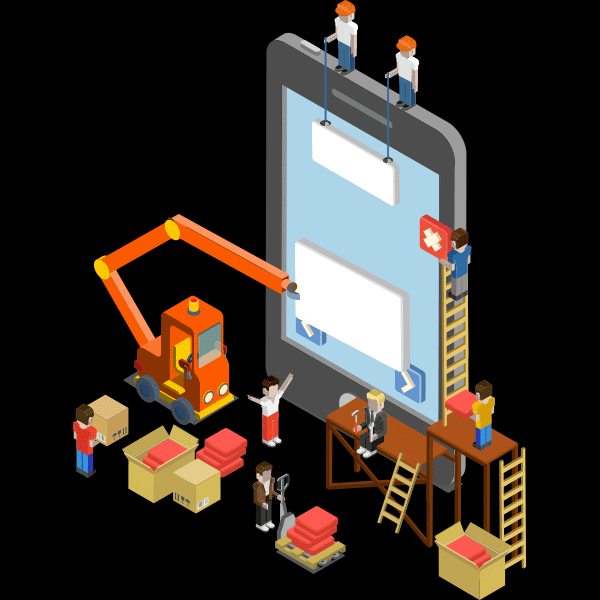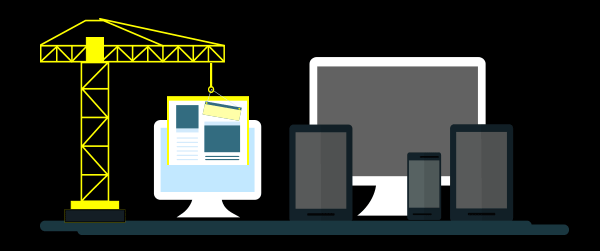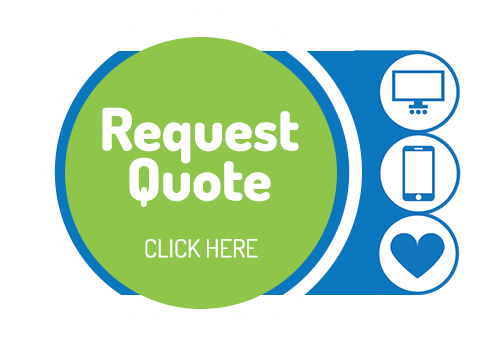Creating a Successful Mobile App
Take a minute to think about all the successful apps that you have used, those the likes of Candy Crush, Angry Birds, Google maps, etc… Many great ideas have shaped our mobile world and have received many praises. Just think about apps you have running on your phone that you use on a daily basis. So many successful apps, it’s gotta be pretty easy! What’s the recipe? One great idea (originality isn’t dead, it’s just waiting for you to find it), a dash of Swift (or JavaScript depending on your preference), a few users so it gains momentum, and voila! You now have a successful app, easy as pie.
Now try one more thing.
Think of all the unsuccessful apps and write down their names. Chances are that you can’t name one. Why is that when thousands of apps fail every year? How could that be when the process is so simple?

Let’s try one more thing. Think of any activity where someone else was more successful than you were. What was different in their process that brought them such incredible success, yet you can’t repeat the same results. The secret…
The devil is in the details.
What separates the haves from the have nots in the app world is pretty simple; the successful app creators pay special attention to every part of the process rather than skipping them if they might not be as enjoyable.
So what is the process? Tag Team design is a premier Denver mobile apps designer and we’re going to give you the secrets so you can find the success for yourself as well.
Research. Research. Research.
The first and, potentially, most important part of creating an app. Think about it, what is the point of creating every detail of a project only to find out someone else is already doing the exact same thing in the exact same way; remember great minds think alike and you’re not the only one in this world.
Start with the question, “What is it that makes my app different?” This can be a thing of values, a unique algorithm, unique logo, anything really that can distinguish yourself from competition. Some people have had success in their marketing ability alone.
Do a simple search on some of the keywords your app might be listed on Google or within the app stores (i.e. Denver mobile apps or Denver seo for us, depending on the project that you are creating <your location> + <your project>). Check out the competition, if any, to see who you are up against. The more time your spend on research the more you will know your purpose, direction, and goal for your application.

Planning & Target Audience (Marketing)
After you have done your research to figure out where you stand and know what it is that makes you stand out, the next step is to set up a plan. This is where all the little questions come in. What are you plans for pricing? Will you charge an initial price to download the app or will you require a monthly fee? Who is your target audience? What price makes the most sense for your target audience? Will I add features periodically to drive more users? Should I offer in-app purchases? And so many more will start to crop up. This is a crucial step in your creation, representing the entire strategy behind your app and the marketing that will extend the reach of which people will notice it. The best laid plans are those that start locally, a good starting target market. For example: we could search in the app store Denver SEO if we were building an SEO tool or Denver web design firms to check out the competition and what they may have already developed so as not to work on something that’s already been created.

The cost and time for development is an obvious factor during the creation of your app. But have you thought about how much it will cost to market? How will people find you or even consider using your app? So many app startups think they are going to be “the next big thing” and will just be a hit right after submission to the stores. Be realistic. Put together an estimated budget before development that will allow you to get the traffic and visibility for success. You may have an amazing application that will change lives but if no one can find it your efforts will have been wasted. Again, starting locally is always a good idea; loading keywords in your content along with the launch of your app (remember we would be Denver mobile apps) so we could create content based on that. This will give you a great start in your local area, giving you an opportunity for exponential growth outwards rather than stretching your resources.
Application Workflow
Workflow — how your app moves from place to place. This may seem like a minor thing to spend your time thinking about but any app that you ever look at has a specific flow designed to it that was thought out and planned down to the smallest detail. How to a user interacts (i.e. UI: User Interface) with your platform is important. If it’s too hard to use then people won’t want to use it, if it has too little features and not enough diversity to it, they won’t see the point in spending their valuable time using it.

Primarily, the concept here is to come up with an idea of how many screens you’re going to have, what will be on each screen, and how all the screens will be linked together.
It may not be initially noticed by a user but your choice of transitions from screen to screen is also an important element in your workflow. Should it slide up? Fade to the next screen? What feeling do you want your users to have when using your application?
Intuitive Navigation
If workflow is how you’re moving from page to page then intuitive navigation is the specific details of how you will get to other pages on each page. Sorry about the tongue twister there, but paying attention to the details is what will allow anyone to create a great, intuitive navigation. Where is the placement of individual buttons and I don’t mean the menu sitting at the top. What if, depending on your content, is was better to have a pop-out menu due to so much being on the page or the interactiveness was disrupted by a top bar navigation. This also entails other internal app links; placement of internal links can help with the initial discovery of various features of your app. Imagine someone didn’t understand the full functionality of what your app did. How long would it be before they stop using it all together?

Spend time on your apps structure because you want to make sure your user can get to their destination as quickly as possible without having to think about where they need to click next. Considering using icons instead of text-based navigation? Do your research on the most widely known icons. If you’re trying to create custom icons to represent your app elements do some user testing first to make sure they are relatable.
Color Scheme
You can Google “color psychology” to find that there are hundreds of articles on the subject, speaking of the many different color combinations that help elicit certain emotional responses (some basic, some abstract) and what individual colors mean to different people. What does this have to do with building a successful app? Your colors can have the most dramatic effect of all. First impressions are everything; this not only applies to business but the initial introduction of your app. The idea here is, what do you want your app to say subtly while someone is navigating through it? Cater your color scheme to what a user is supposed to take away from your product. A visually appealing application will surely keep your users engaged. This also creates a great opportunity for branding purposes. Keep your colors in line with what you already have as a brand. For Tag Team Design we stick to orange, black, and green because when people think Denver mobile apps, their minds will already be primed for our colors when using our app, allowing constructs to be more easily relatable in the mind.

Device Orientation
I can say without a reasonable doubt that as a human being that is alive in 2017, you have interacted with many different types of apps. Have you ever noticed that depending on what application you use the orientation changes? Some jump straight into a landscape view and others stay in a portrait view. Why do you think this might be? Again, we’re confronted with nihilistic question, “What does it all matter!!!???” Your device orientation can completely, once again, change the interaction a user has with your app (notice how that idea keeps coming up, curious huh?). What if you had four drop down boxes that you wanted to sit side by side from left to right. Imagine what it would look like when in a portrait view, potentially, crunching all the text to the point that makes it hard to read what you’re selecting. How might this affect the popularity of your app if it’s not built with a responsive design that makes it easier for users to interact with.

Mobile-First Design (Great segway right?)
If you’re new to the app building world/programming world, you might not know off hand what “mobile-first design” is; let me explain. Mobile-first design is creating a responsive design (when your website adjusts parts of it depending on the size of the screen) starting out from the standard size of a mobile screen (480 pixels and below) and moving upwards. Off-hand, that doesn’t sound like something important if you’re designing an app for iOS or Android, but with the prevalence of tablets, it has to be something considered. Where will the individual parts of your app move when the screen becomes bigger. How will this affect the user interactiveness on a tablet device? A simple consideration like this could easily change the amount of users downloading your app by the thousands. Simply put: the more people that can access it, the more that can download it (more money, more recognition).

In the Consideration of Your Users (Previous Softwares)
Yet another aspect of consider is how far back you want to build your softwares for the app. Keep in mind not everyone has upgraded to the Iphone 8/X or the Pixel 2. This means that they could have old phones with old softwares, maybe as far back as iOS 7. Again, this is the idea that the more people you can reach, the more users you can have. The whole idea is to make you app as popular as possible right? Make sure to consider this; it can easily be planned in your talks with your development team to add this flexible feature in.

Prototype Your App
Now that you have considered and carefully planned out the many aspects that go into app design, you are ready for prototyping. This is the part of the process when you actually implement everything you’ve planned out to really get a feel for the fluidity of what you’ve created (before it’s even coded). This will be a basic model but can give you the assurance that you have come up with a great idea or if certain parts need to be reconsidered.
This is probably one of the most important steps to building a successful application. Share your progress with trusted friends, coworkers, or family to get a feel for your application. Treat them like they have never seen or heard of the application before and let them test it. Did they get lost at one point in the app? Not sure how to complete a specific task? Are specific features not standing out or intuitive enough for them to understand? Making a simple application for a user to understand is not always an easy task. Use this moment to also build out great content with your designated keywords (as a reminder: Tag Team Design so we would throw in our chosen keywords like Denver mobile apps or Denver SEO). You may go through multiple versions of your prototype to get it right but you will thank yourself later when you haven’t spent extra days, months, or maybe even years trying to correct a mistake that could have been resolved during your prototyping.

Web App Integration
After you’re at the point that you have decided that you are completely satisfied with your prototype, it’s time to consider whether you want it to solely be available in the app store or are there other features you can integrate into a web application on your site. This can provide tons of versatility to your design, allowing users to interact with the information that was once only available on their phone. Let’s say your app uses lists to help with the user interaction but those list represent pertinent information to them. With the creation of a web app, they can now access these lists at home or in their office, adding a new realm of versatility to your application. This is different for every application but should be carefully considered when thinking about the whole user experience.

All and all...
There are many things to consider when building an application (besides price) that can affect how successful it could eventually become. The best way to think about it is “better to be safe than sorry.” In this case, your application has the best chance to succeed when all parts are considered, instead of throwing something together just to get a working model. This leads to a terrible user experience and being that we need users to interact with our apps to make them successful, it’s best not to test the limits of a pieced together design.
So now it’s time to put your new app idea to the test! If you follow these important elements during your application development and marketing process, it will definitely position you on a path to building a successful mobile app.
If you want to know more about the process of building a mobile app, check out our previous article build a mobile app that will give you all the in’s and out’s how to build each part of the process.
About Tag Team Design
For small to medium enterprises, Tag Team Design is the partner that truly drives incremental customer demand. Unlike traditional digital agencies, Tag Team Design takes a team approach to creating profitable strategies for each and every client. Contact us today!
The Business Journal recently named us a top-15 Denver web design agency; come find out why.


